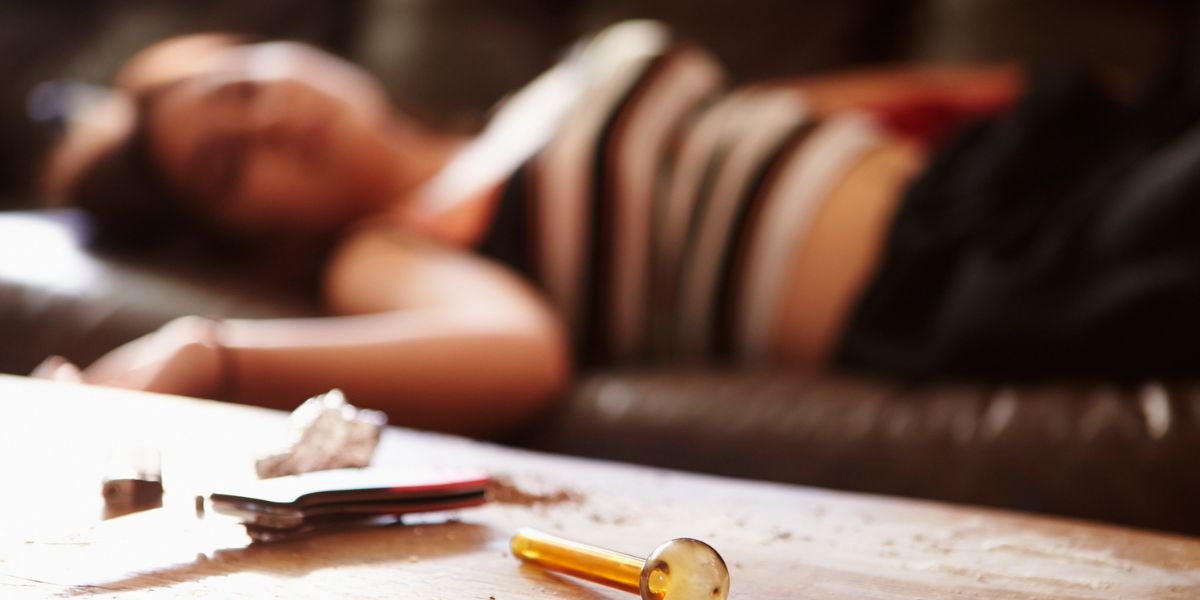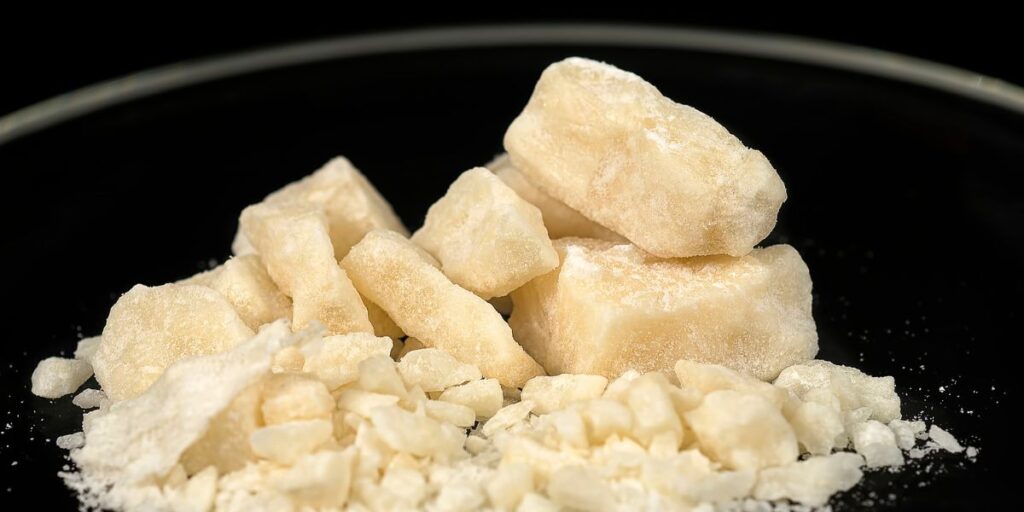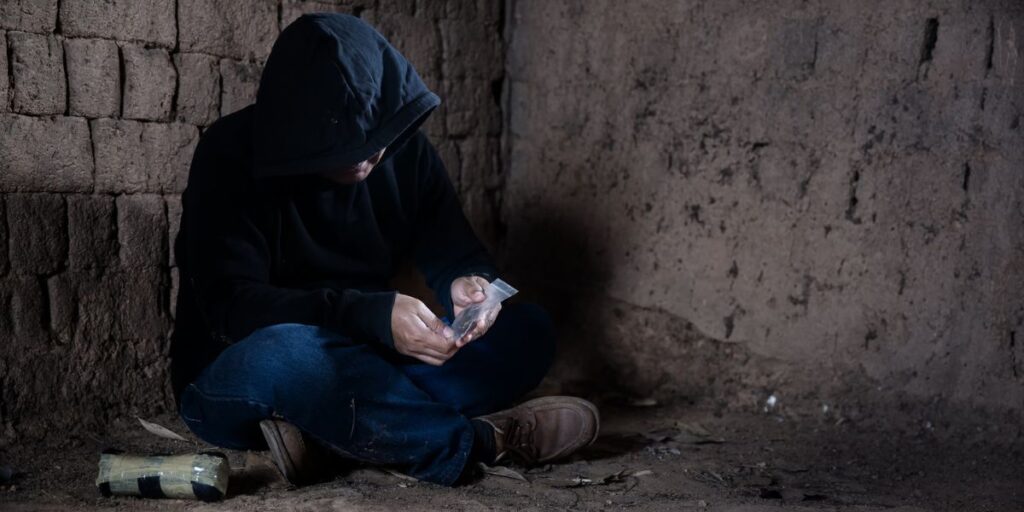Effects of Smoking Crack Cocaine


Medical Writer:
Reviewer:

Johnny Kim
Executive Psychotherapist
Medical Writer:
Reviewer:

Johnny Kim
Executive Psychotherapist
Many of the most apparent effects of crack cocaine stem from prolonged, intense addiction. Wrong information and bad public campaigns have caused a lack of knowledge about the signs and effects of using crack cocaine.
Often, people transition to crack from cocaine, seeking a more intense high as their tolerance grows. Crack, though chemically similar to cocaine, induces swift and potent euphoric sensations. Trying crack once can quickly lead to a strong addiction, as people become obsessed with feeling that initial high again.
Table of Contents
ToggleUnfortunately, because crack cocaine is so highly addictive, it can lead to a cycle of abuse and dependency. These actions may lead to severe health complications, psychological challenges, strained relationships, and legal consequences.
While the signs of crack addiction are challenging to hide, those affected frequently attempt to do so. Recognizing the signs of misuse and dependency is crucial. White Oak Recovery Center provides evidence-based treatments and therapies to help you find the underlying causes of your addiction.
What Is Crack Cocaine?
Crack cocaine, also known as crack, is a highly addictive illicit drug. It is produced by blending powdered cocaine with a secondary ingredient, usually baking soda or ammonia, and water, then heating the mixture until it solidifies into a smokable, hard rock, typically off-white or gray in color.
The term “crack” is derived from the distinctive crackling noise it emits upon heating. Smoking crack through a pipe, a makeshift tube, or on foil, known as freebasing, is the prevalent method of consumption, though it can also be snorted or injected.
Crack cocaine in the US is classified as a Schedule II controlled substance and is commonly referred to as crack rock, rock, freebase, or hard rock. It is assigned to Schedule II because of its substantial resemblance to cocaine, another Schedule II substance, suggesting its restricted medicinal value.
The primary distinction between crack and cocaine lies in the heightened addictiveness of crack, largely influenced by the method of consumption. The National Institute on Drug Abuse (NIDA) notes that smoking crack cocaine produces effects lasting 5 to 10 minutes, unlike snorting cocaine, which has a slower onset and effects that persist for 15 to 30 minutes. The rapid delivery of crack cocaine to the brain when smoked results in intense effects, facilitating the rapid development of addiction.

Crack Cocaine Effects
The effects of smoking crack cocaine are immediate, powerful, and addictive. Each use results in swift effects that fade quickly, leading people to consume repeated doses to sustain their high.
Crack cocaine’s symptoms include:
- A surge of euphoria
- Increased chattiness
- A spike in energy
- Elevated heart rate and blood pressure
- Expanded pupils
- Decreased hunger
- Agitation
- Fidgetiness
- Lowered inhibitions
- Heightened sexual desire
Many effects of crack cocaine resemble the effects of cocaine abuse, particularly with potent batches. Users of crack often combine it with other stimulants to prolong or intensify the high, potentially causing unexpected side effects.
Short-Term Side Effects of Crack Cocaine
The immediate effects of crack diminish within 20 minutes, yet crack cocaine remains in the system for an extended period, producing short-term effects even as the high diminishes. Research indicates that the majority of crack users also misuse other drugs and alcohol in conjunction with crack, heightening the risk of severe side effects.
Short-term side effects of crack include:
- Muscle twitches
- Coughing
- Raised body temperature
- Anxiety
- Sleeplessness
- Paranoia
- Sore throat
- Itchy skin
- Dizziness
- Clenching of the jaw
- Vomiting
- Diarrhea
- Headaches
- Picking at the skin
- Red eyes
- Strong desire for more crack
- Unpredictable behavior
- Grinding of teeth
- Runny nose
- Burns on the mouth and fingers
- Nausea
- Aggressive episodes
The short-term effects of crack can differ depending on the strength of each batch and the duration of each user’s binge. Even with the initial use of crack, there is a constant risk of unexpected complications, such as overdose and sudden death.
Long-Term Crack Cocaine Side Effects
Crack can quickly lead to long-term side effects and irreversible damage. Regular crack users rapidly build up a tolerance, necessitating increasingly higher doses to experience the same effects.
Long-term consequences of crack use encompass:
- Impaired impulse control
- Malnutrition
- Withdrawal symptoms
- Memory loss
- Anhedonia (inability to feel pleasure)
- Hallucinations
- Cognitive impairment
- Constriction and hardening of blood vessels
- Sexual dysfunction
- Ulcers
- Suicidal or aggressive thoughts
- Anxiety
- Heart damage
- Slow-healing injuries
- Migraines
- Loss of motor skills
- Nerve damage
- Psychosis induced by cocaine
- Elevated risk of stroke
- Increased risk of heart attack
- Crack lung
- Depression
- Open sores near the eyes
- Harm to the soft tissues inside the nose, mouth, and throat
- Persistent respiratory issues
- Weight loss
- Tooth decay
- Bowel decay
- Seizures
- Self-harm tendencies
- Loss of smell
Prolonged use of crack cocaine exposes users to the risk of infectious diseases such as HIV and hepatitis, often due to sharing drug paraphernalia and engaging in hazardous sexual activities. Additionally, as crack narrows blood vessels, wounds, particularly open sores, heal sluggishly and are prone to severe infections.
Beyond the severe health effects, crack cocaine usage can also result in significant social, financial, and legal problems.

Crack Cocaine Addiction Treatment at White Oak Recovery Center
Crack cocaine addiction often leads to feelings of isolation, hopelessness, and a hesitancy to seek treatment, thereby continuing the cycle of abuse. Nevertheless, effective, evidence-based treatment is more available than many realize.
At White Oak Recovery Center, we provide onsite medical detox to help you safely navigate withdrawal with continuous medical care and support. Our residential treatment facility boasts an excellent staff-to-resident ratio, ensuring personalized attention and guidance for everyone.
After completing medically supervised detox, we collaborate closely with you to identify the underlying causes of your addiction and determine the most effective strategies for teaching healthy behaviors and self-sufficiency, paving the way for sustained recovery.
Reach out to discuss your treatment possibilities. The treatment expenses may be fully covered by your health insurance. One phone call can be the beginning of your recovery journey.

Am I covered for addiction treatment?
Your insurance may cover treatment. Call now for an entirely free and confidential assessment. Recovery starts with a phone call.

- Smart, R.G., “Crack Cocaine Use: A Review of Prevalence and Adverse Effects.” Am J Drug Alcohol Abuse, 1991.
- “Facts You Should Know about Crack.” Illinois Department of Human Services (IDHS), 2023.
- Nestler, Eric J., “The Neurobiology of Cocaine Addiction.” Addiction Science Clinical Practice, Dec. 2005.
- Hoff, A.L. et al., “Effects of Crack Cocaine on Neurocognitive Function.” Psychiatry Res., Mar. 1996.
Medical Disclaimer:







